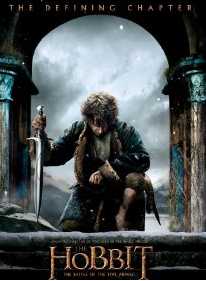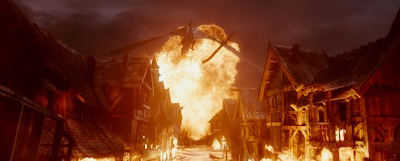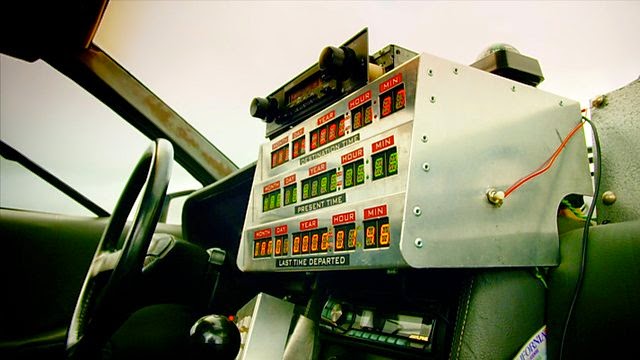Blake's 7: The Classic Audio Adventures - Scimitar/Fortuitas
Monday, 29 December 2014 - Reviewed by
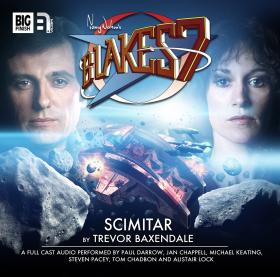
Scimitar (Blake's 7: The Classic Audio Adventures)
Written By: Trevor Baxendale
Directed By: Lisa Bowerman
Big Finish Productions, November 2014
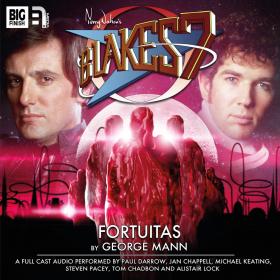
Fortuitas (Blake's 7: The Classic Audio Adventures)
Written By: George Mann
Directed By: Lisa Bowerman
Big Finish Productions, December 2014
Into the breach steps (according to Avon), “mercenary of the first order” Del Grant (Tom Chadbon), a one-time character from the TV series (he first appeared in B7’s second season in the episode Countdown in 1979) and the brother of the woman that Avon once loved (and subsequently killed when he learned she betrayed him). Grant joined the Liberator crew off-screen in The Armageddon Storm, the third volume of BF’s Liberator Chronicles boxsets, and more recently appeared in the ninth volume which acted as a precursor to this full cast audio series. As a result, this series of audio adventures occurs about a third of the way through the TV program’s third season (for purists, probably in a gap between the episodes Rumours of Death and Sarcophagus), just as the preceding lot of full cast audio dramas were set a third of the way through B7’s second season.
Simon’s absence from the series enables the writers to set up a loose, obvious story arc – one which could be nicknamed (in either jest or sarcasm) “The Search for Dayna”. Just as the previous instalments of BF’s full cast B7 audio plays were littered with “breadcrumbs” that eventually led Blake and his crew into a confrontation with the Federation President, so the opening instalments of this series, Scimitar and Fortuitas, see Avon and his team go in pursuit of their crewmate who has mysteriously struck out on her own.
The first clue the Liberator crew uncover in Scimitar leads them to the Desolation sector, one of the hotspots of the Intergalactic War. There, they discover the titular shipwreck of the story and its secret cargo which has also drawn the interest of a Federation salvage crew, comprising the opportunistic Karlov (Buffy Davis) and her dry-humoured sidekick Drince (Daniel Brennan). The second breadcrumb the crew find in Fortuitas leads the crew to the rundown tourist world Solace. Before long, Tarrant is kidnapped (mild spoiler, in B7’s equivalent of being frozen in carbonite!) and Avon and the rest of the crew have to rescue him, whilst unravelling a deeper mystery and dealing with a bunch of extremist fanatics that very deliberately parody numerous far right political parties in the UK and Europe.
Scimitar is a solid, straightforward example of space opera, with some good moments of humour and tension between the regular characters (Grant to Cally: “Avon’s found a computer he fancies!” “True love!”) and even the Federation salvage crew members (Drince’s reaction when he learns that he is to don the ship’s lone spacesuit and navigate his way through a storm of ship debris and asteroids is conveyed brilliantly through a disbelieving but flat “What?” There is also some good banter between Karlov and Drince once he is out in space: “Just be careful you don’t get a tear in that spacesuit! I don’t have a spare!” “Right, I’ll be sure to look after it for you!”).
While Scimitar is a capable opener to this new series, Fortuitas is the better of the two releases. Fortuitas is very deliberately geared as a detective-style mystery, with Avon and Orac in the roles of Holmes and Watson (although each one clearly considers himself Sherlock!). The only disappointment with this episode is the resolution. It is difficult to explain without giving away major spoilers why it doesn’t quite work. While the true identity of the two-dimensional villain isn’t entirely predictable, it isn’t entirely plausible either and makes one of the incidental characters look like a massive chump, especially when all the evidence points to that person as the mastermind of the whole scheme!
Nevertheless, the build-up of the mystery is well written and performed. Avon, who once admitted to never liking an unsolved mystery (in the TV episode Mission to Destiny), seems an uncharacteristic choice to assist information broker Marl Ranking (Hywel Morgan) in the search for his missing wife (Avon is certainly not as compassionate as Blake), although it becomes quickly clear Avon is motivated by the challenge of deciphering the puzzle. Orac, who is normally confined to the Liberator, is brought planetside by Grant, and provides an excellent foil for Avon in his investigation. There is even a fantastic homage to the Guy Ritchie/Robert Downey Jnr version of Sherlock Holmes when Orac gives Grant instructions on how to dispatch of some Fortuitas heavies: “I suggest you take the one on the left first with a low punch to the gut ... The other one is coming up behind you! Kick hard and low ... Duck, sidestep to the left, strike with the left elbow, then with the right fist, step back, bring left knee up to face, sharp with both hands ...”
There is no doubt that Alistair Lock, as the voices of both Orac and Zen, clearly enjoys the opportunity to do something different with Orac. While it’s great to hear Lock finally get some recognition and talk about playing these iconic characters in the extras track for Fortuitas, it’s a pity the track is only available as a download for Big Finish subscribers (due to a mastering issue, the extras track was omitted from the CD). You realise how committed Lock is to these roles and in particular to ensuring he gets the late Peter Tuddenham’s original voices absolutely right (incidentally, Lock’s voice work is flawless – his renditions of Orac and Zen sound exactly like their TV counterparts; if there are indeed any subtle differences, then they are barely noticeable). It certainly helps that the writers also create some excellent dialogue for Orac as well.
Lock’s performances, of course, ably complement the regular actors who are on song as usual. Darrow’s Avon, unencumbered by the pesky Blake, chews up the scenery while he gets good support from co-stars Keating, Chappell, Pacey and Chadbon. As is inevitable with an ensemble cast, not enough of the regular characters seem to get enough to do. Vila and Tarrant in particular seem to spend most of the time on the sidelines, either restricted to the Liberator while their other crewmates go on “away missions”, or (in Tarrant’s case) being captured. Nevertheless, the actors seem to enjoy so much being together (if the CD extras are any guide) that they are not troubled by how little they get to do, and there are still some individual moments of brilliance. The “Del double act” in Scimitar, when Tarrant and Grant interrogate a portmaster about Dayna’s whereabouts, is very well written and performed. A cursory but encouraging inspection of the later instalments shows that Vila and Tarrant will get meatier storylines.
What isn’t explored in these first two instalments, as it was in The Liberator Chronicles, is the integration of Grant into the Liberator’s crew. Indeed, it seems the crew have readily accepted him, judging by the Del double act, Cally’s reaction when it appears Grant has perished on the Scimitar and his work as Orac’s courier on Solace. This seems all a little confusing, given that in the recent Liberator Chronicles IX, members of the crew, including Tarrant and Vila showed immense distrust of Grant (Tarrant even threatened to shoot him in the back!). There is, of course, still room to explore Grant’s place in the crew in the next four episodes but there is little of the tension that was hinted at in the lead-in to this series. All the same, it will be fascinating to see what Grant’s ultimate fate is – and whether it will be connected at all to the conclusion of this series.
In all, Scimitar and Fortuitas are a good start to this latest series of B7 audio dramas. Although the premise of the series – “The Search for Dayna” – is a little dubious (why didn’t BF consider recasting Angela Bruce, who had played Dayna in the 1990s B7 radio plays The Sevenfold Crown and The Syndeton Experiment? Bruce has worked for BF in recent years as Doctor Who’s Brigadier Bambera!), the episodes themselves have been enjoyable and entertaining. Whether we actually will see a resolution to the story arc at the end of the six plays will be most interesting. If Dayna is to figure in the final instalment, then either Josette Simon has to make an appearance or at the very least, someone else will have to play her role. How this is executed – and whether it also ties in with Grant’s presence on the Liberator – may underpin just how plausible this series is in B7 lore.
